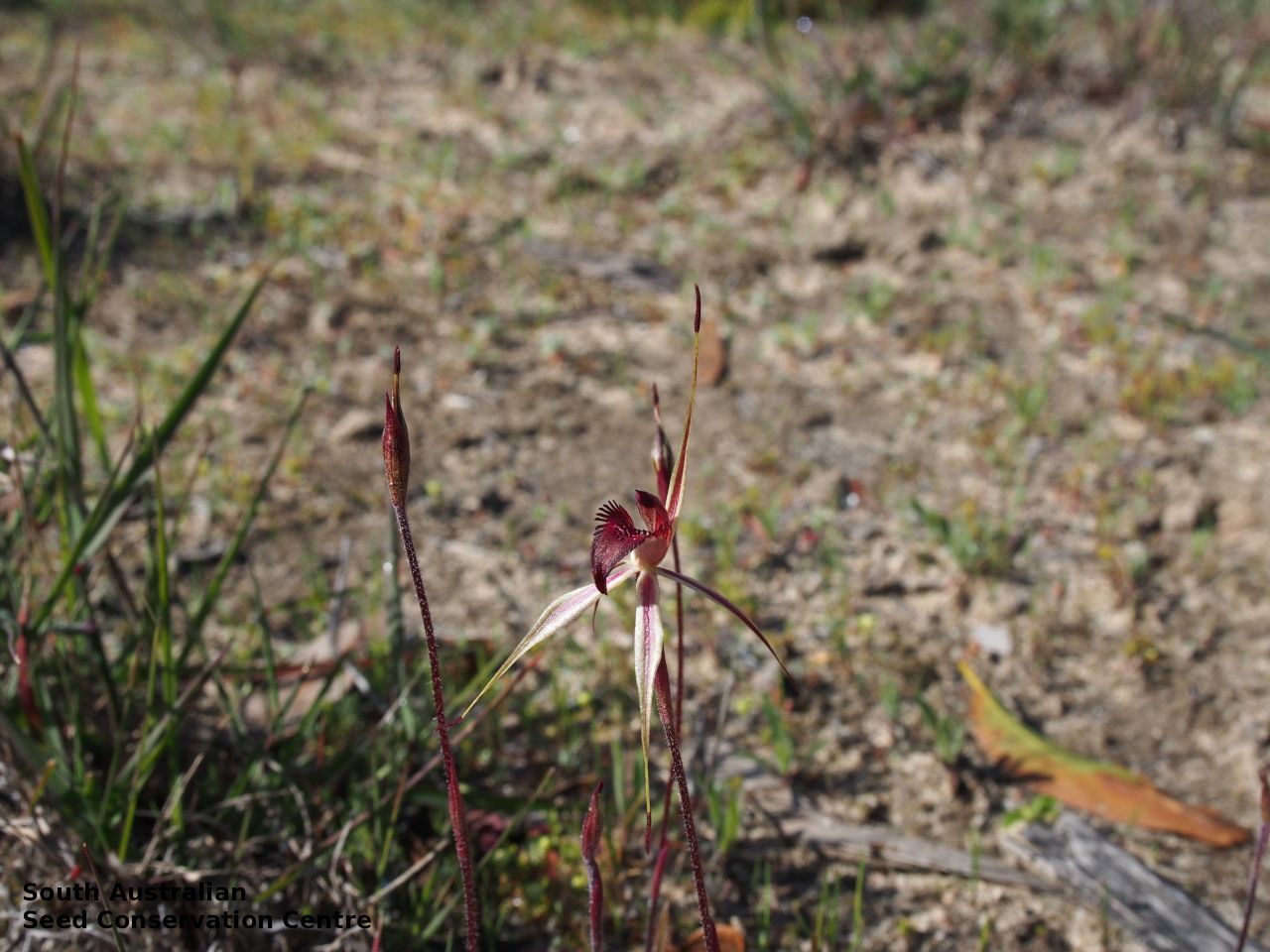
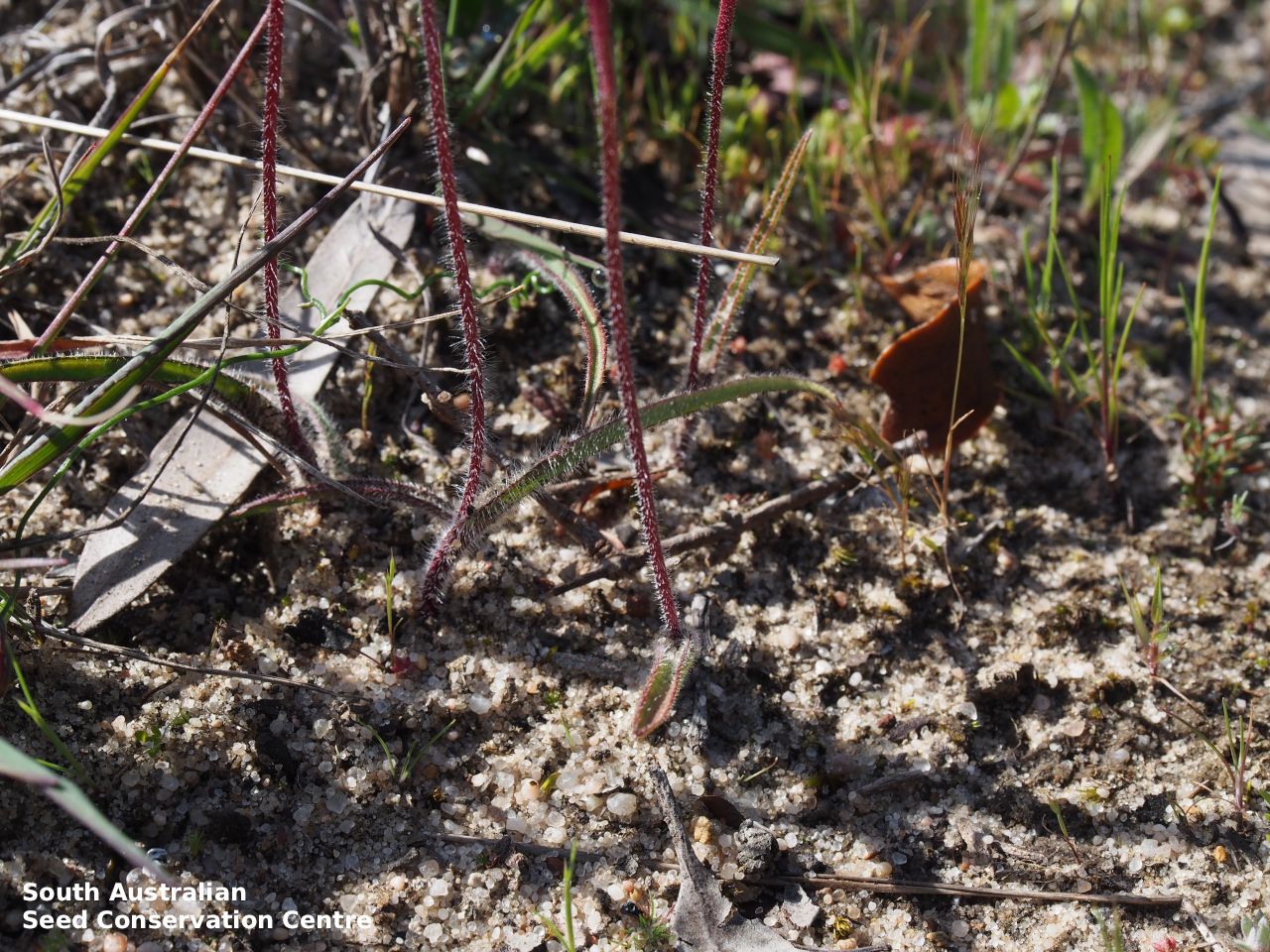
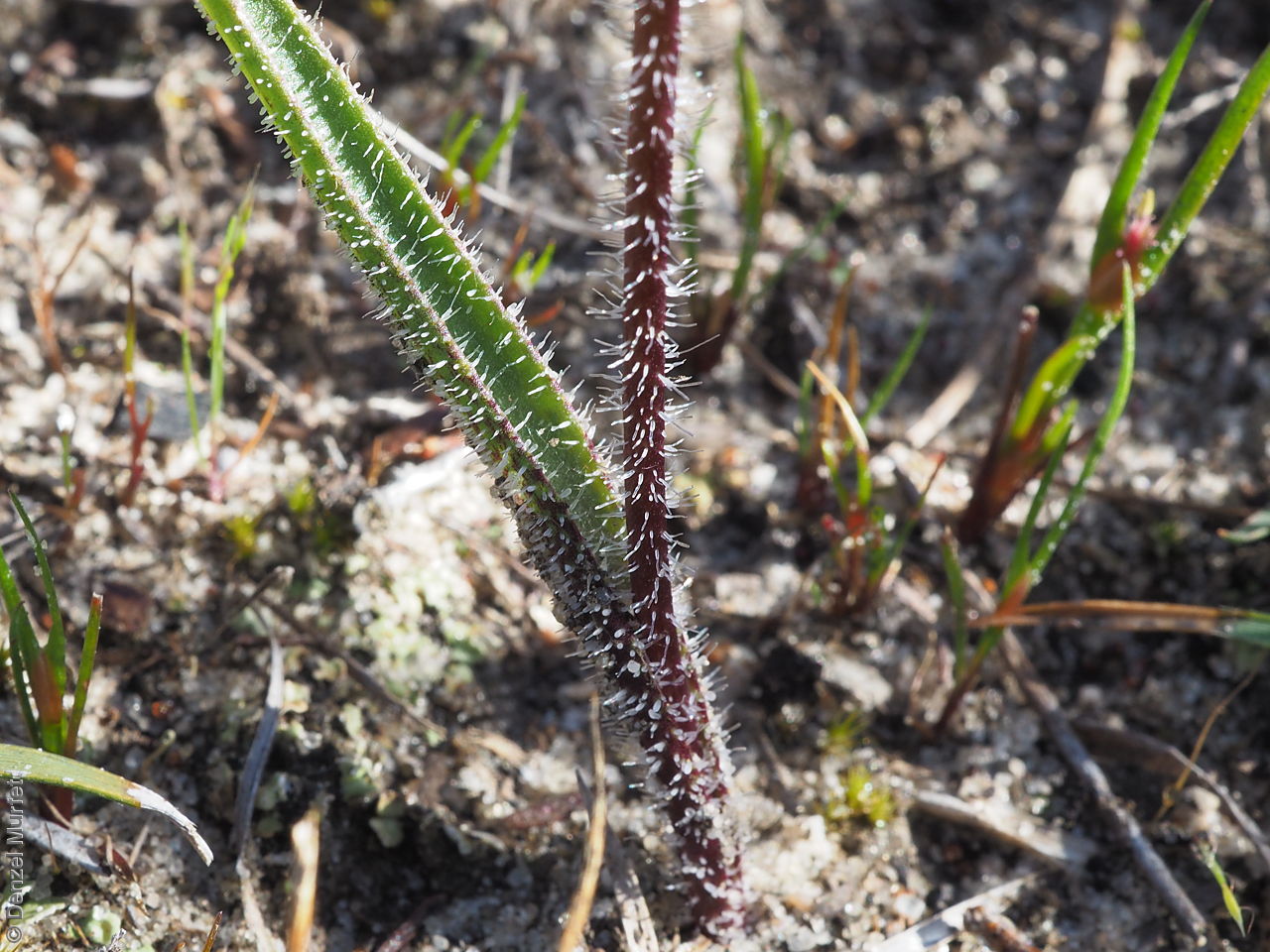
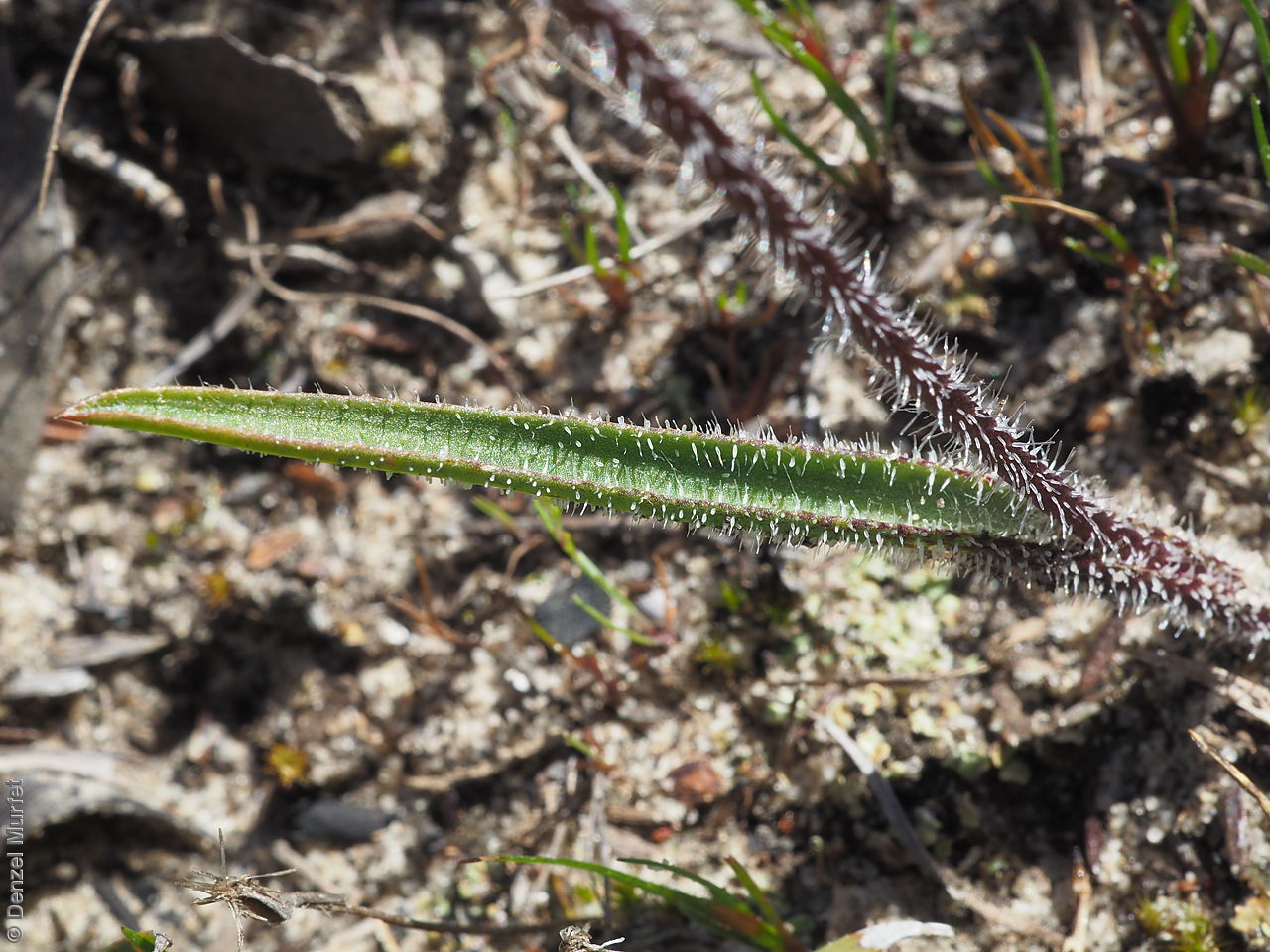
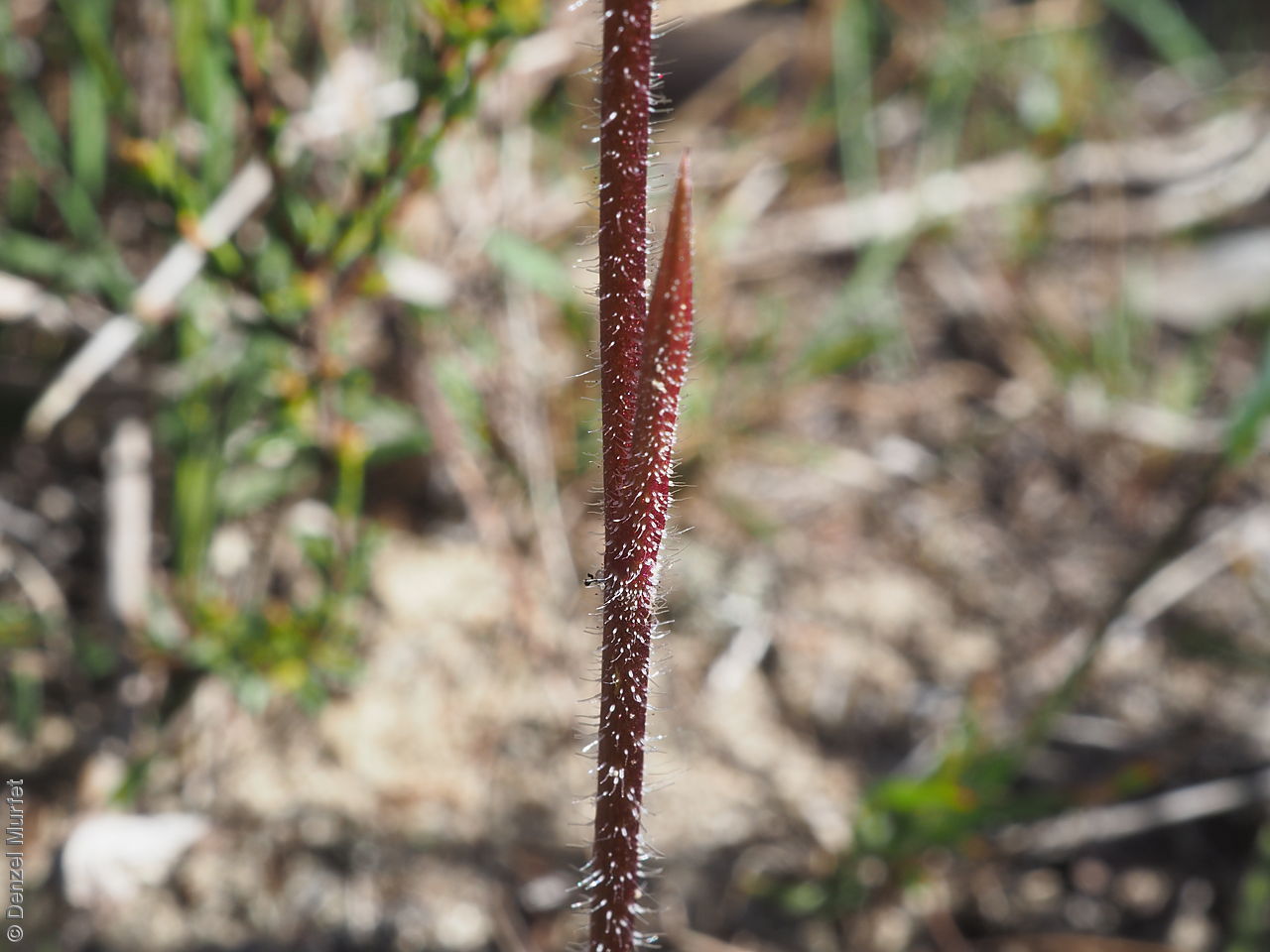
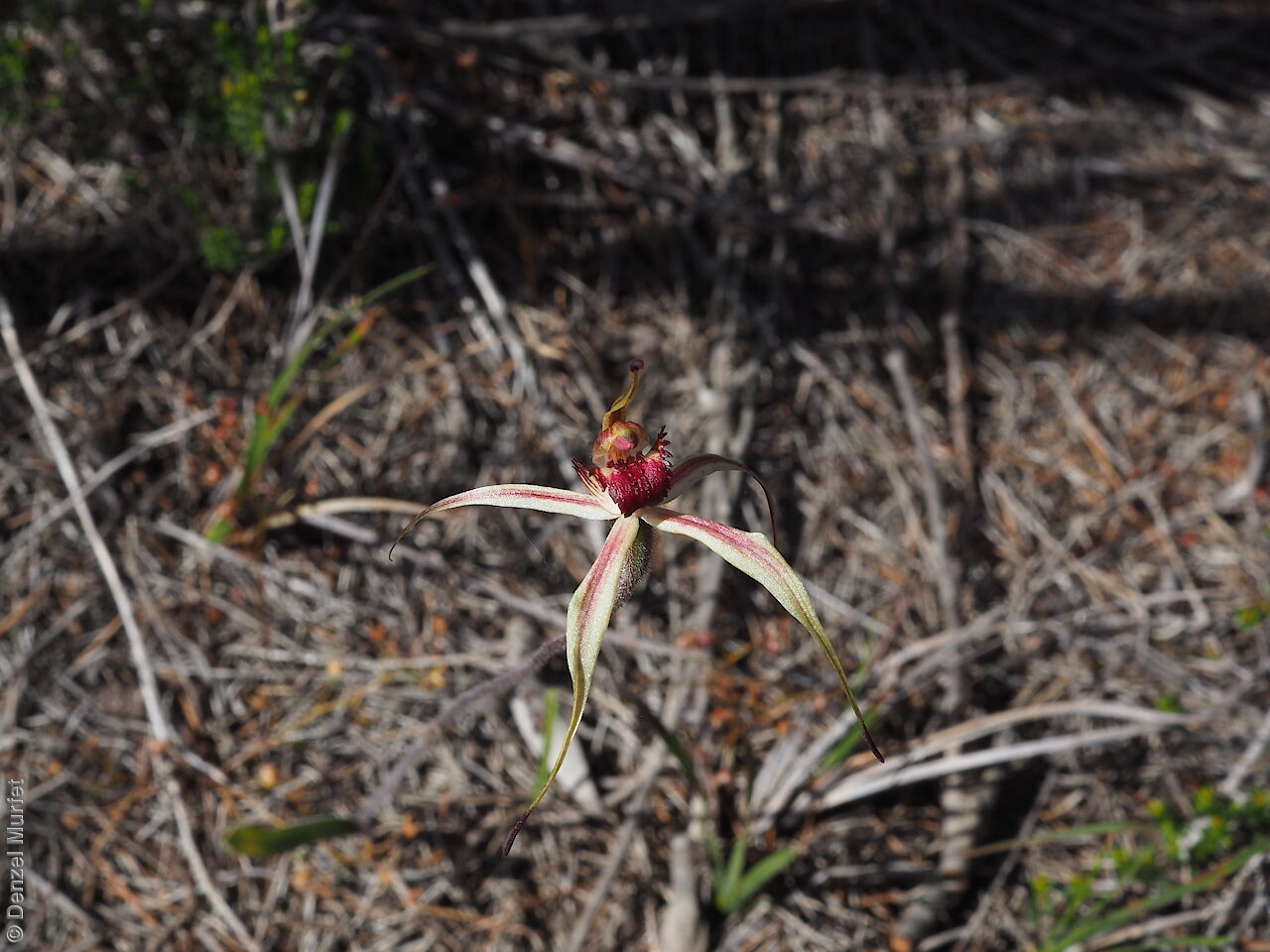
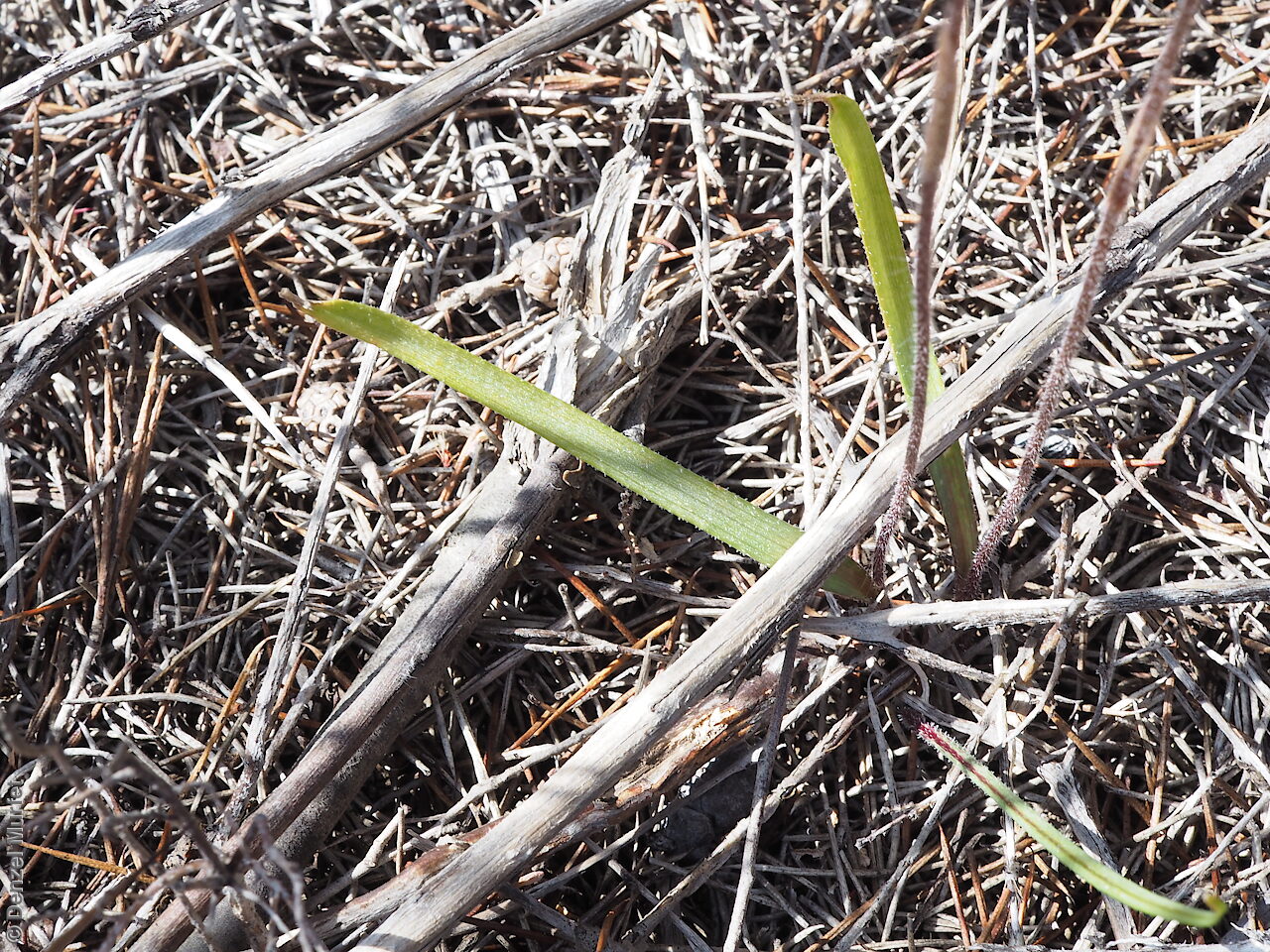
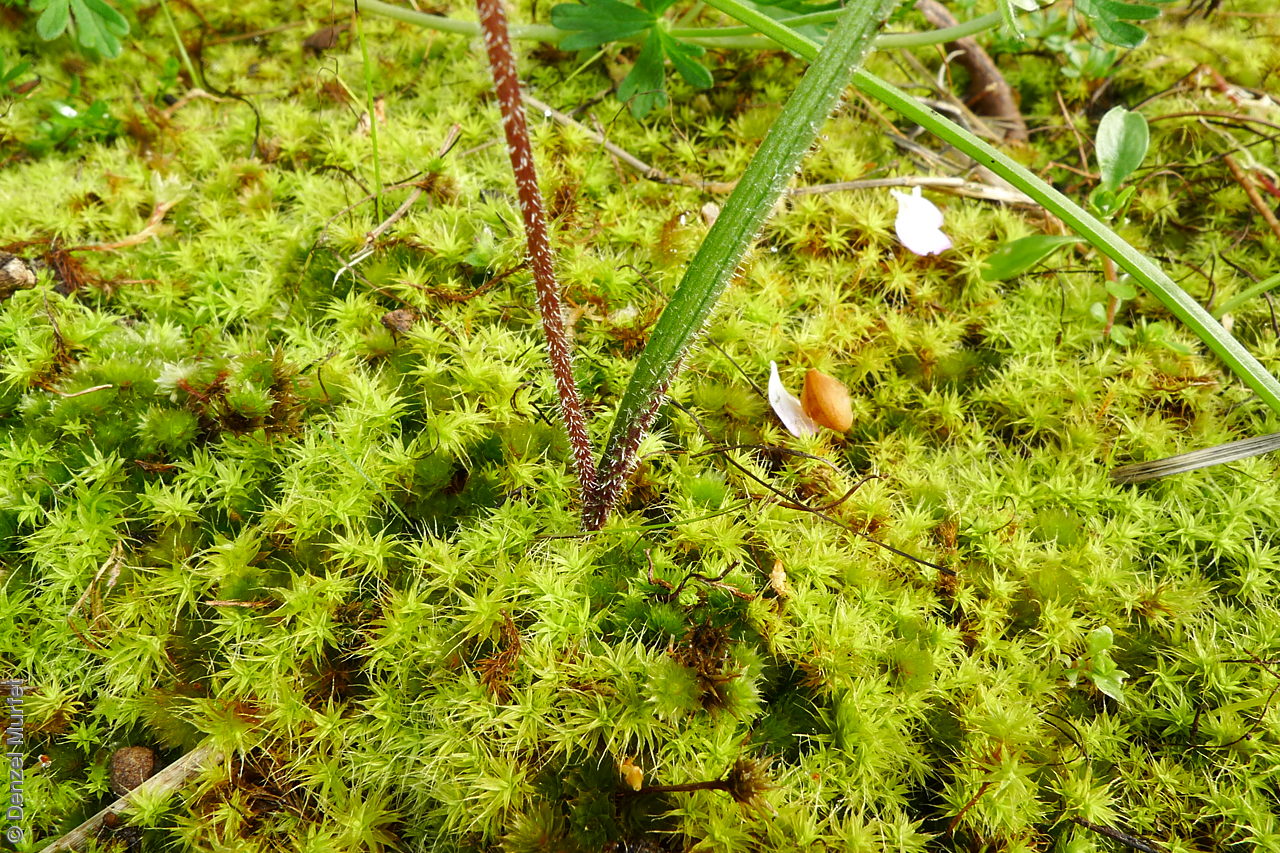
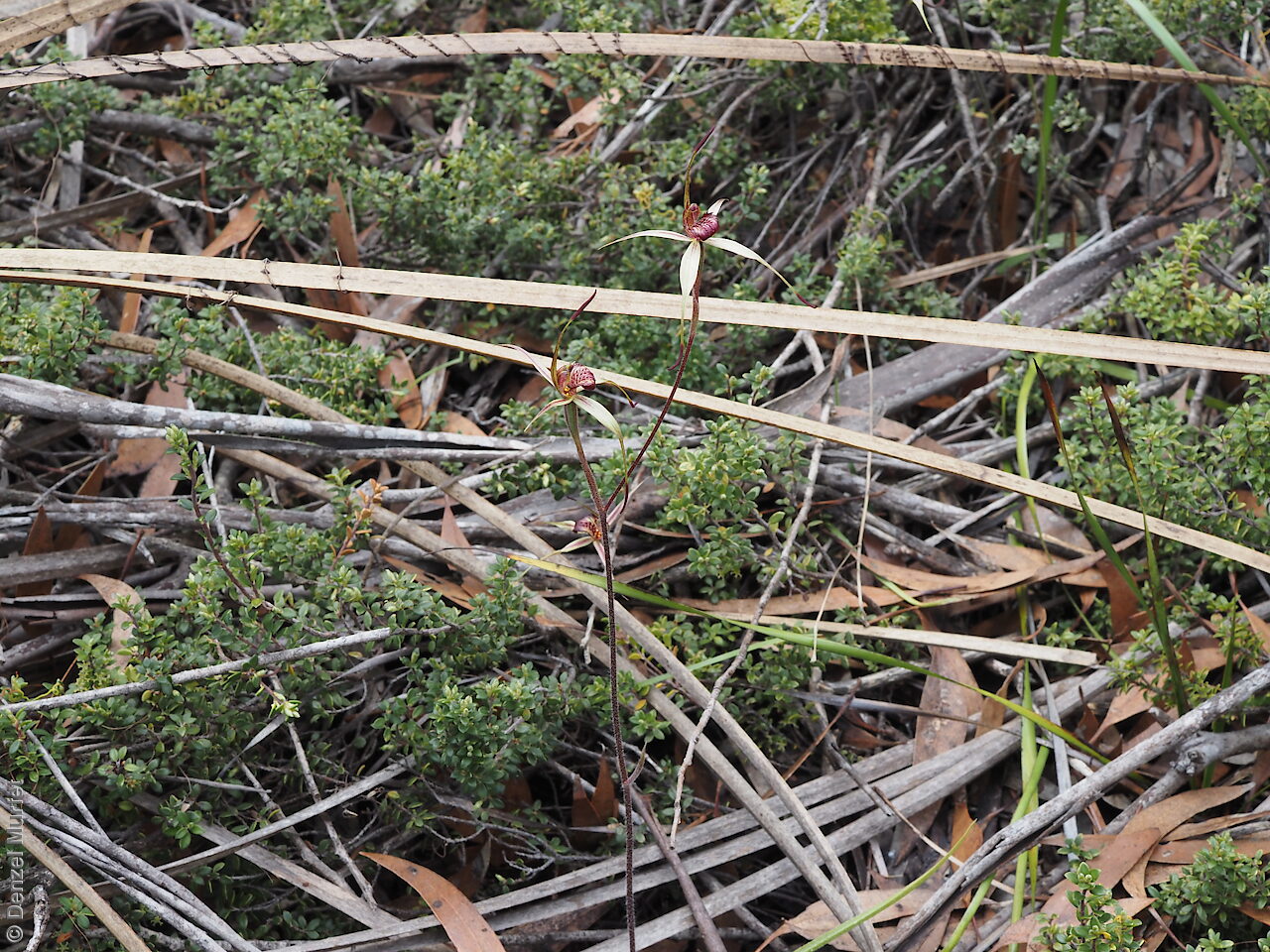
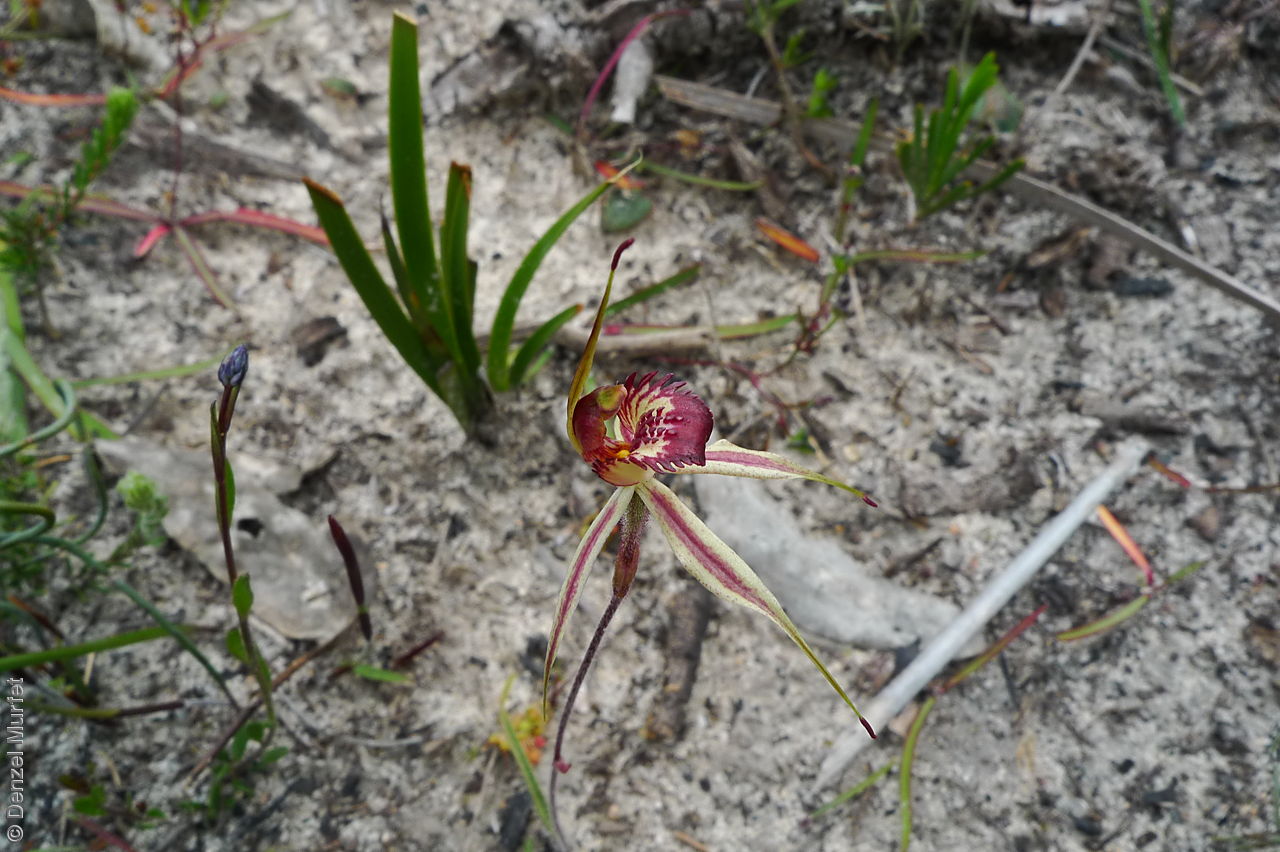
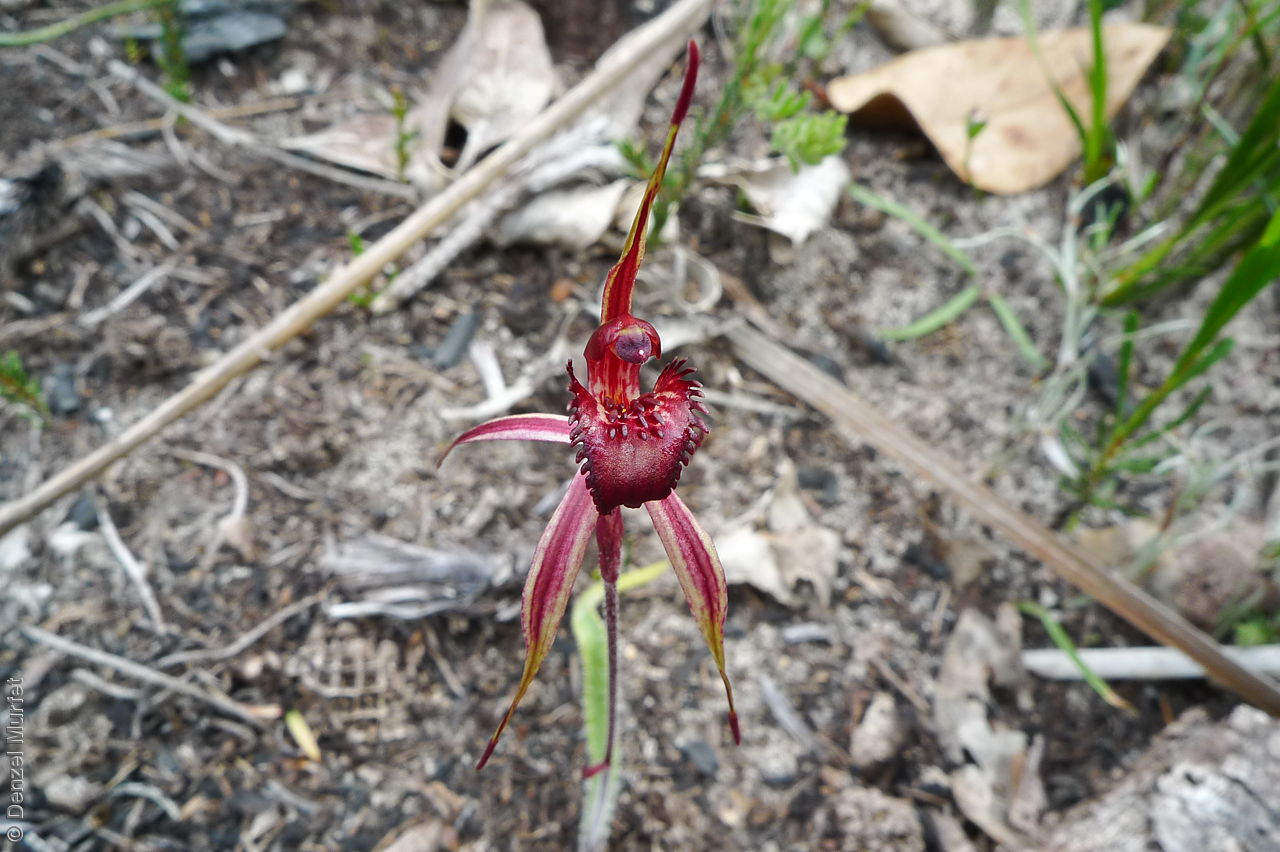
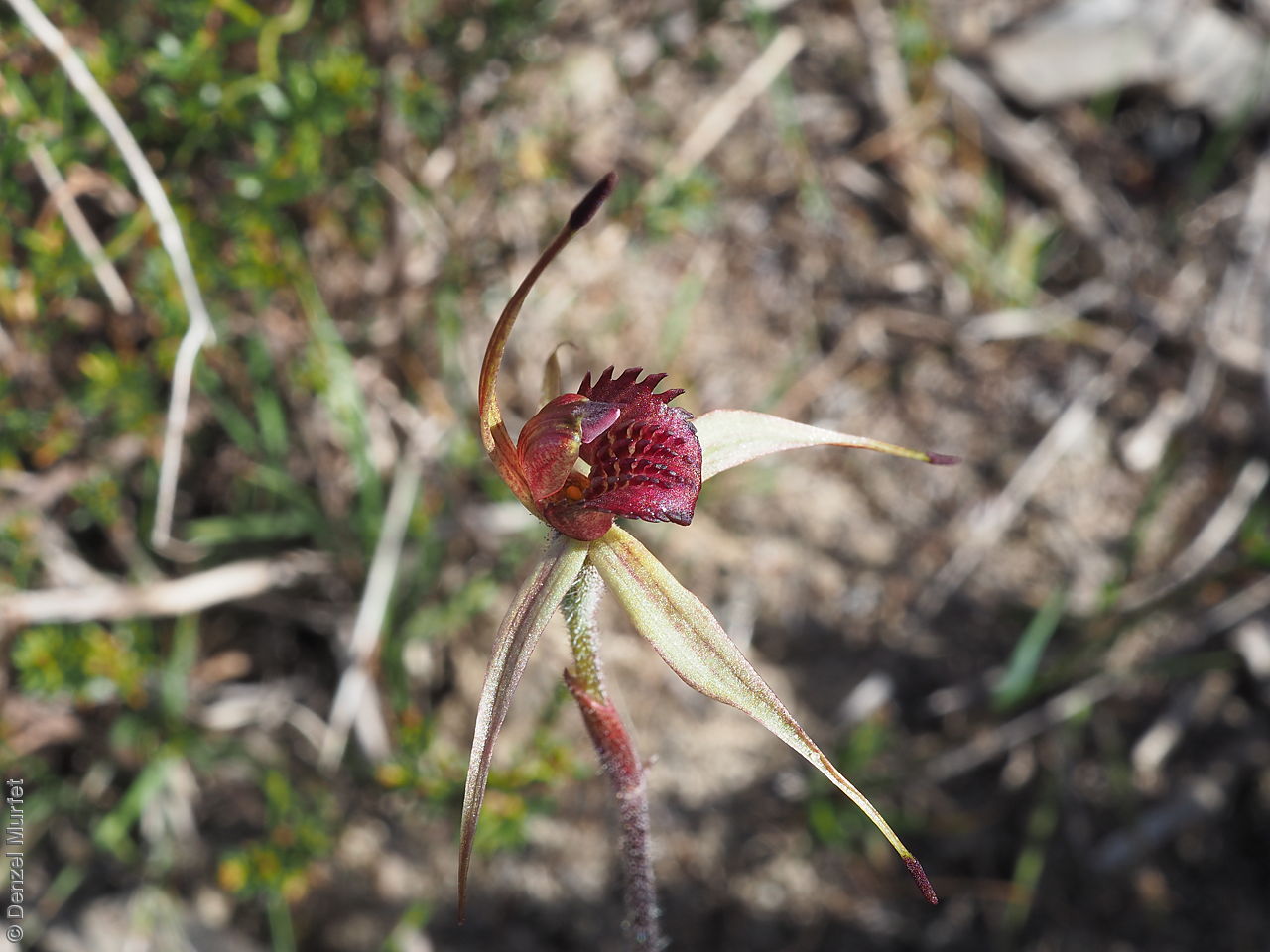
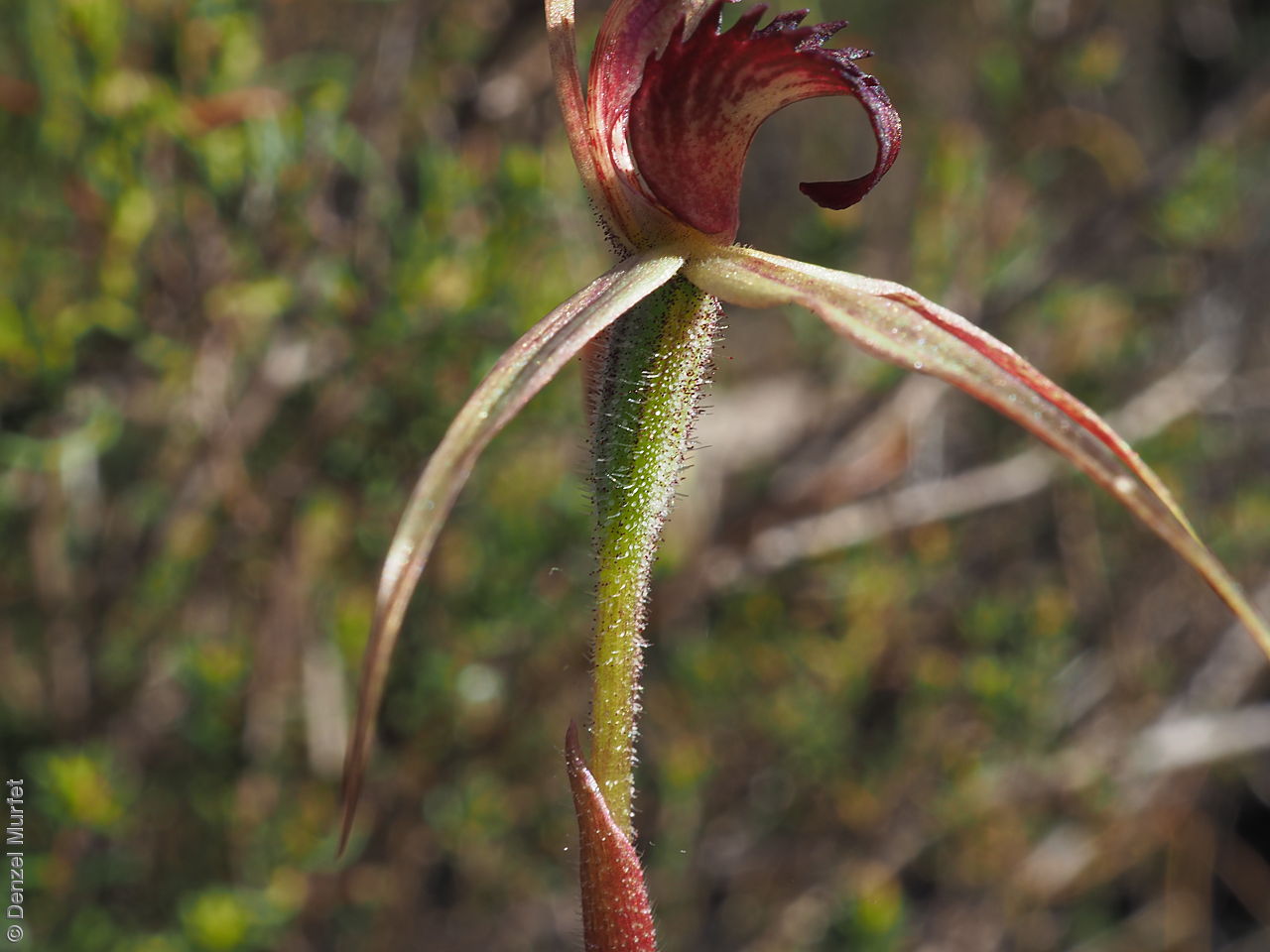
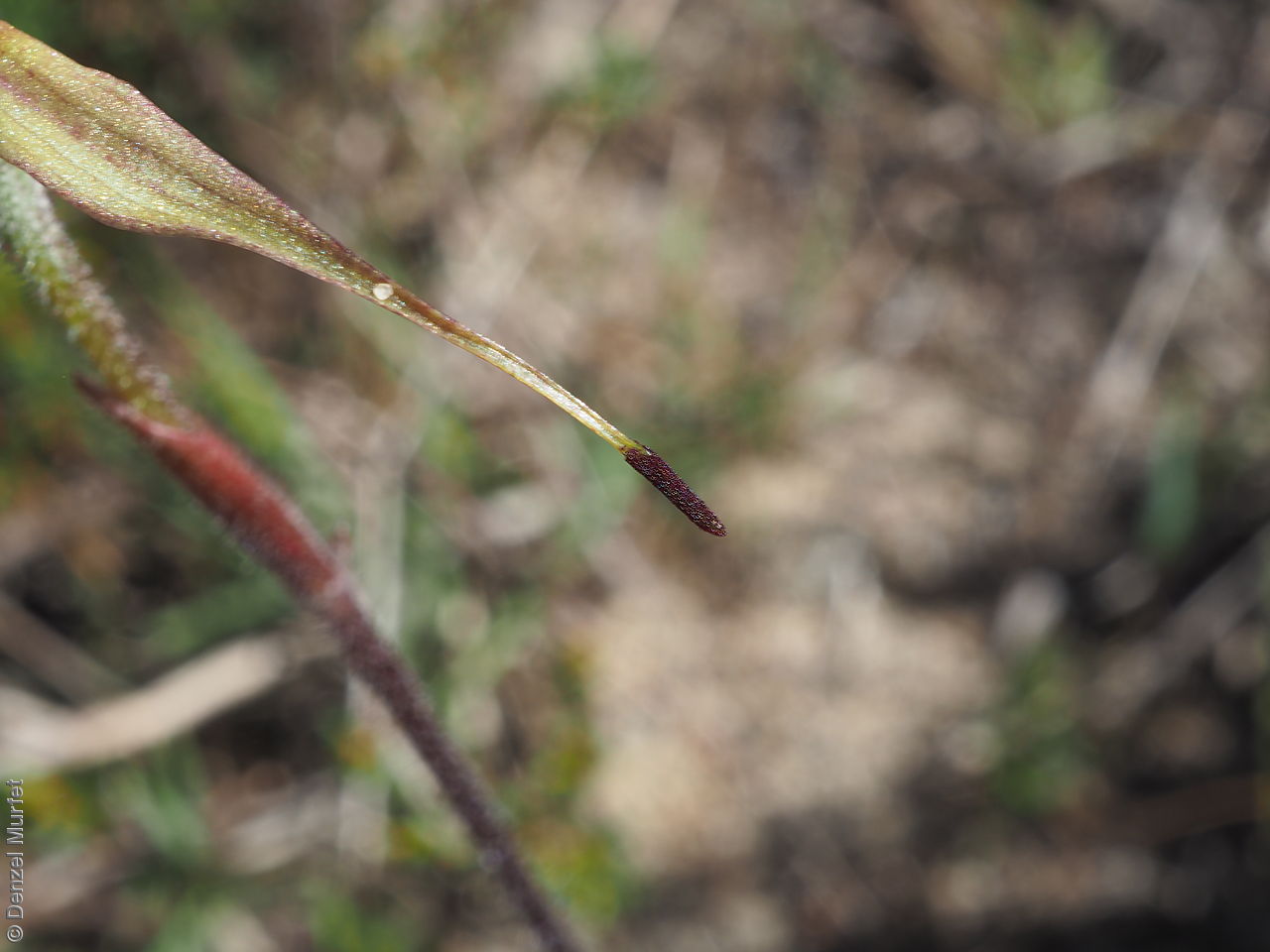
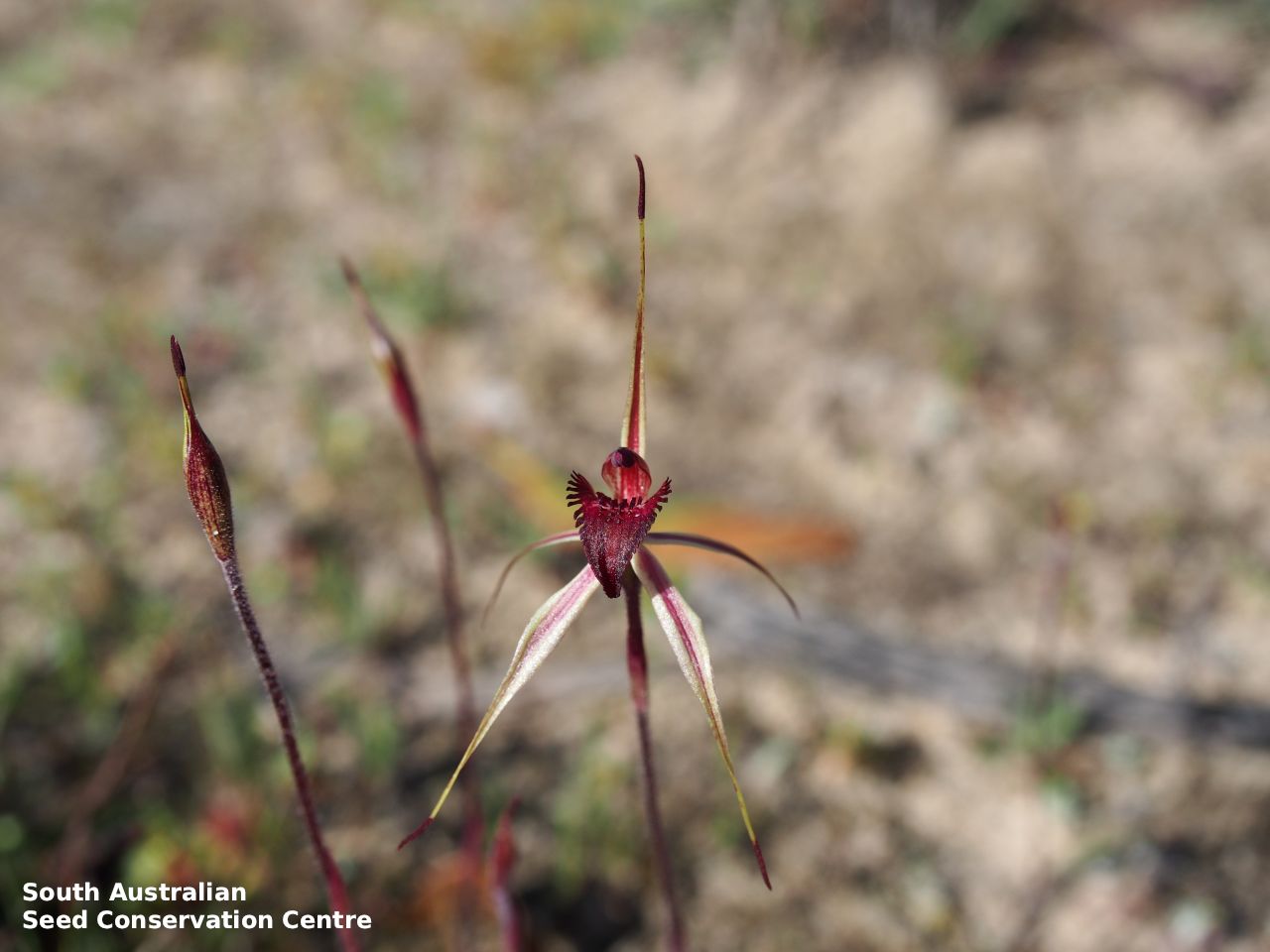
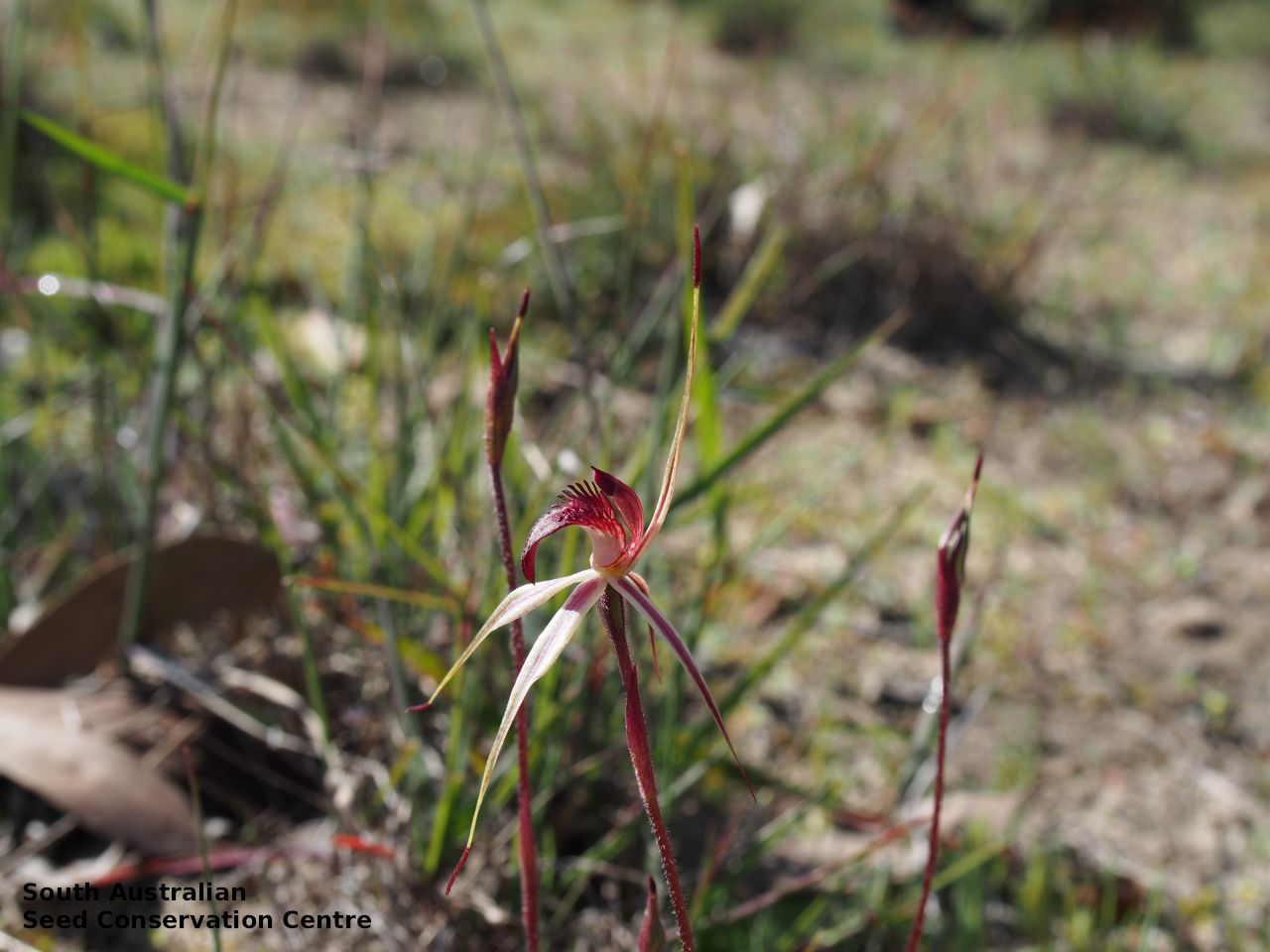
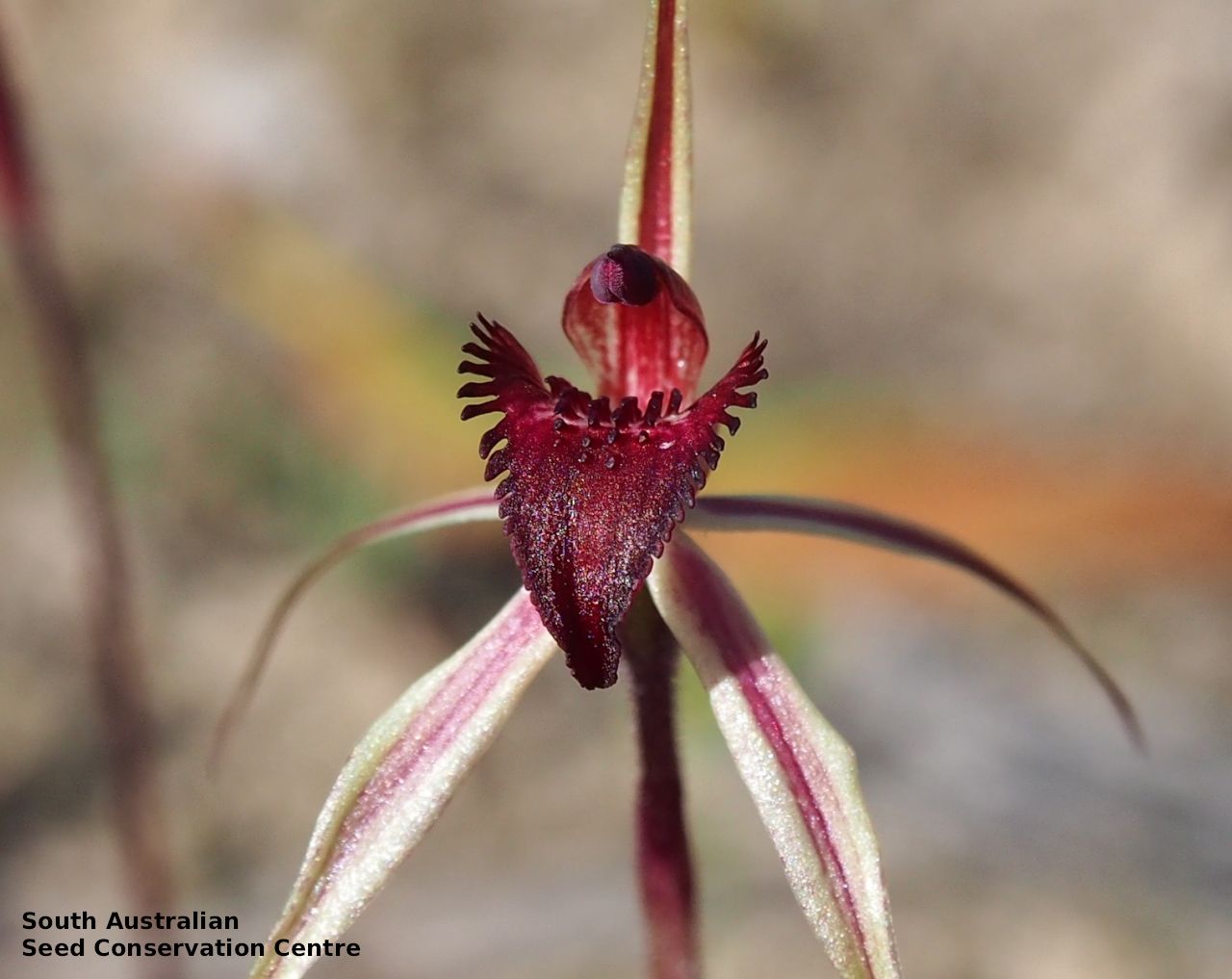
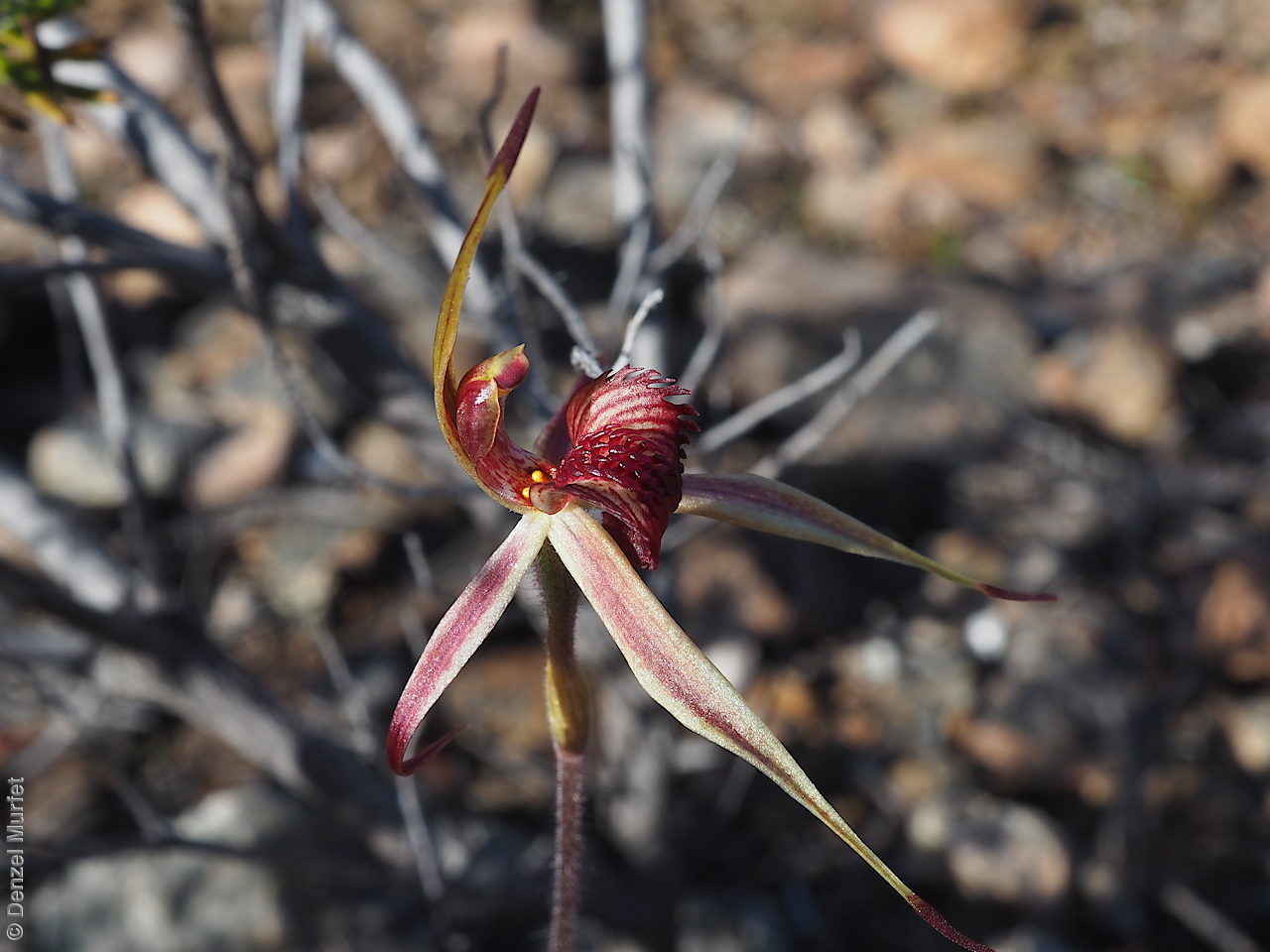
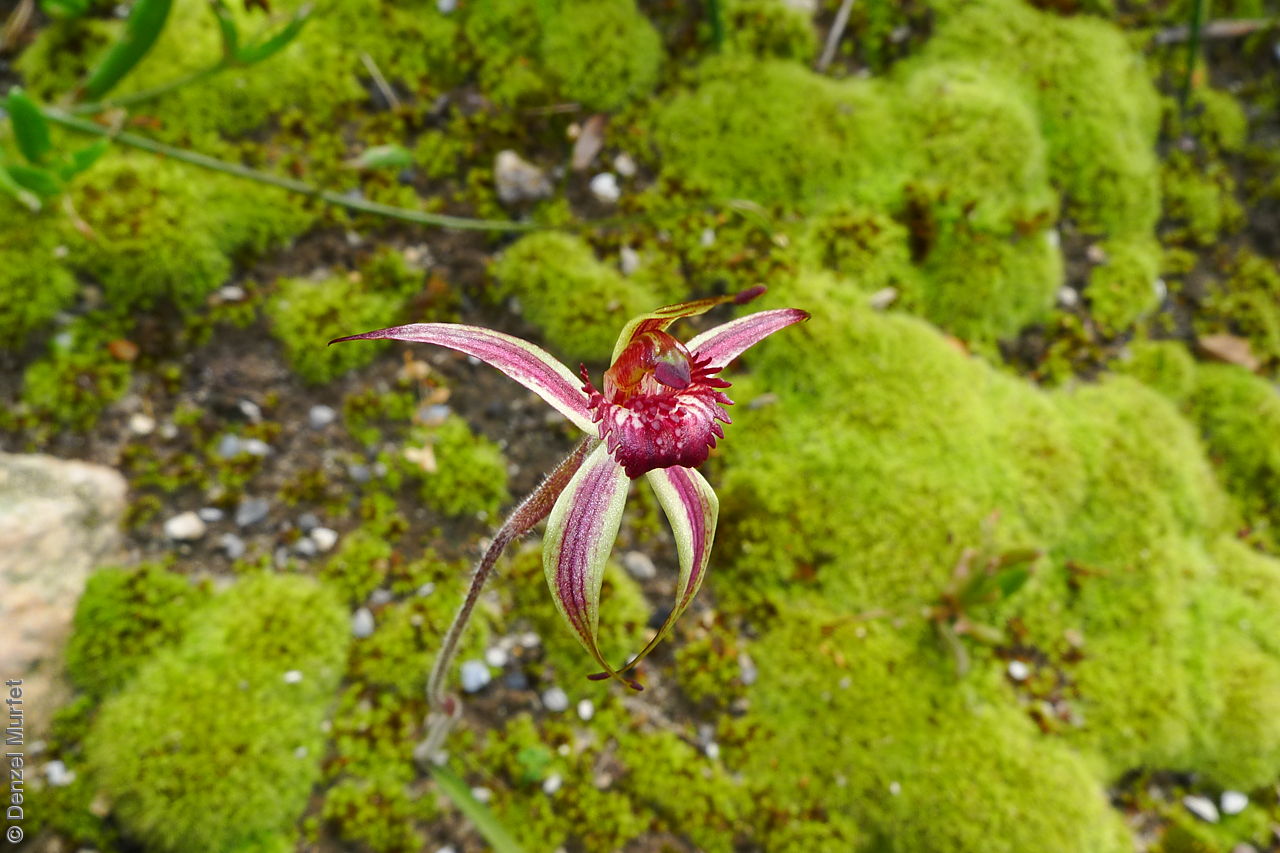
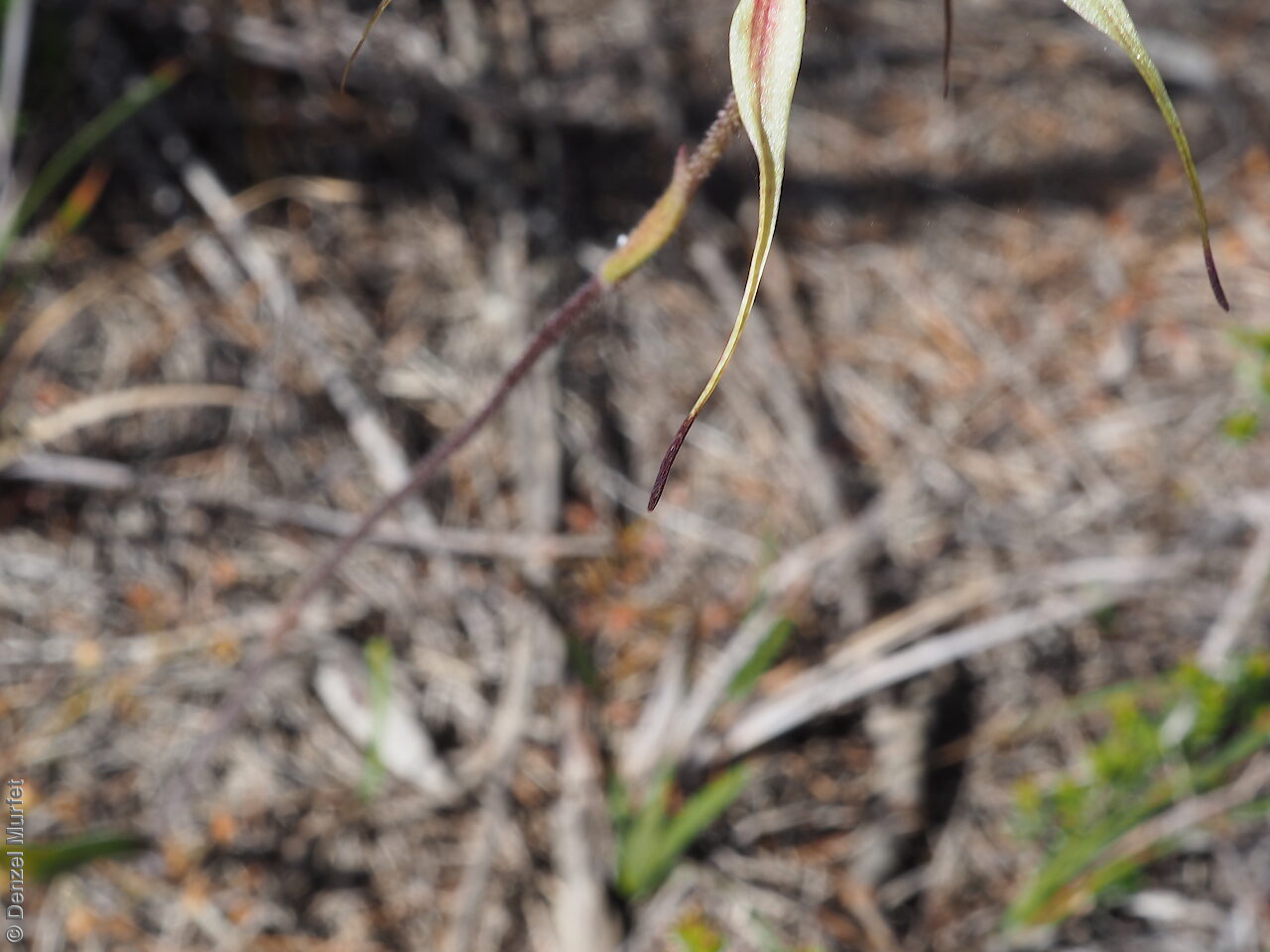
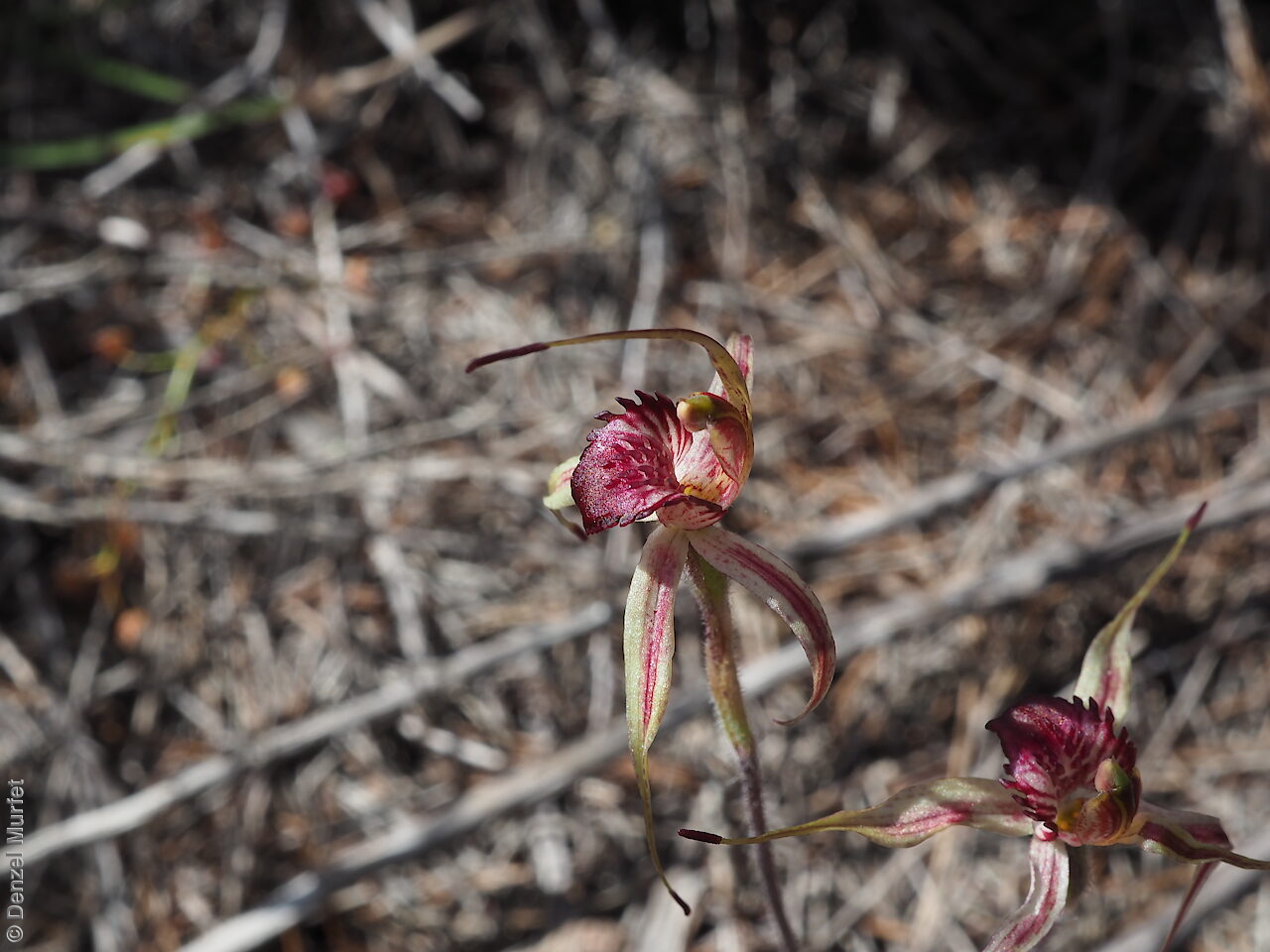
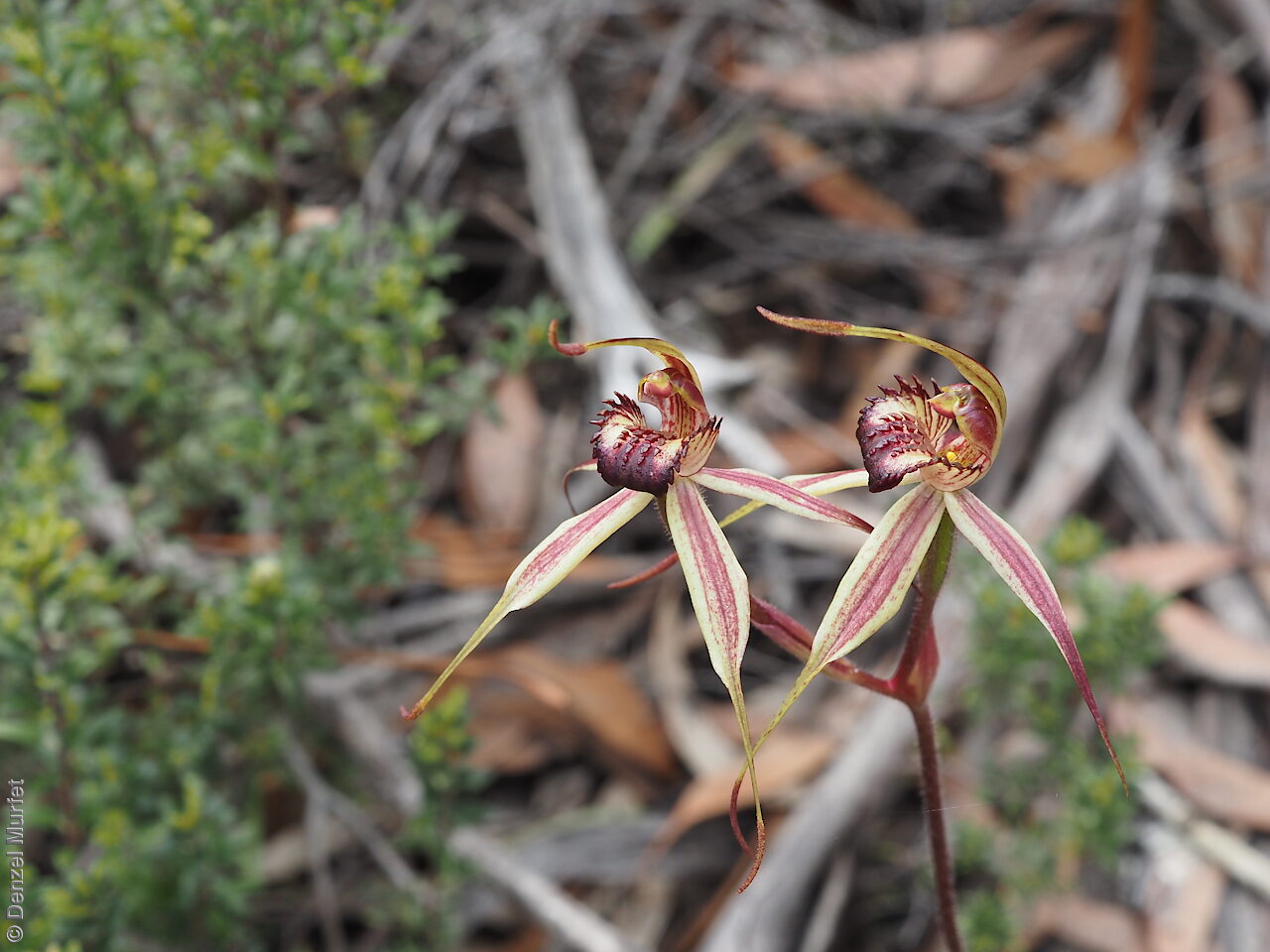
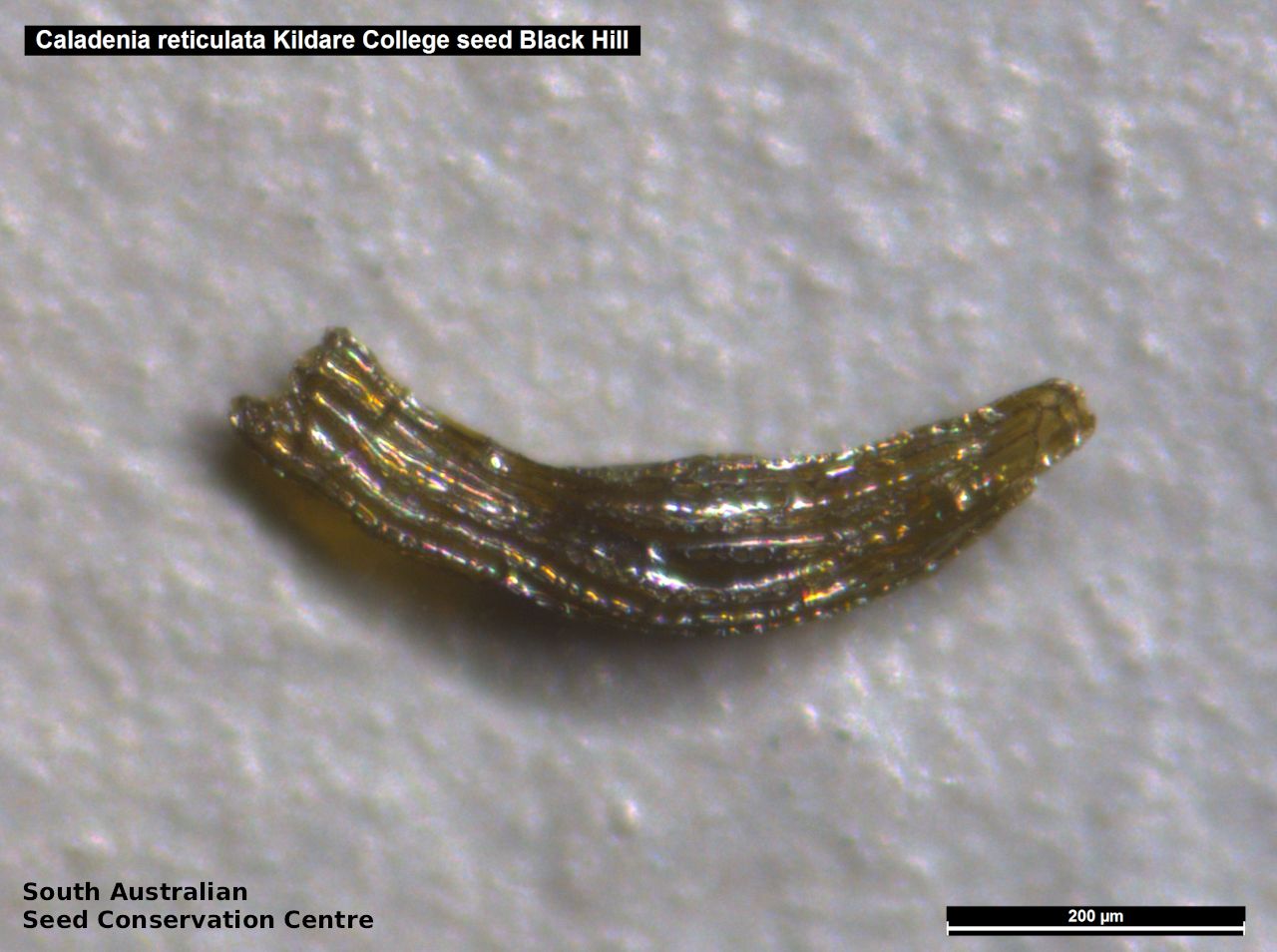
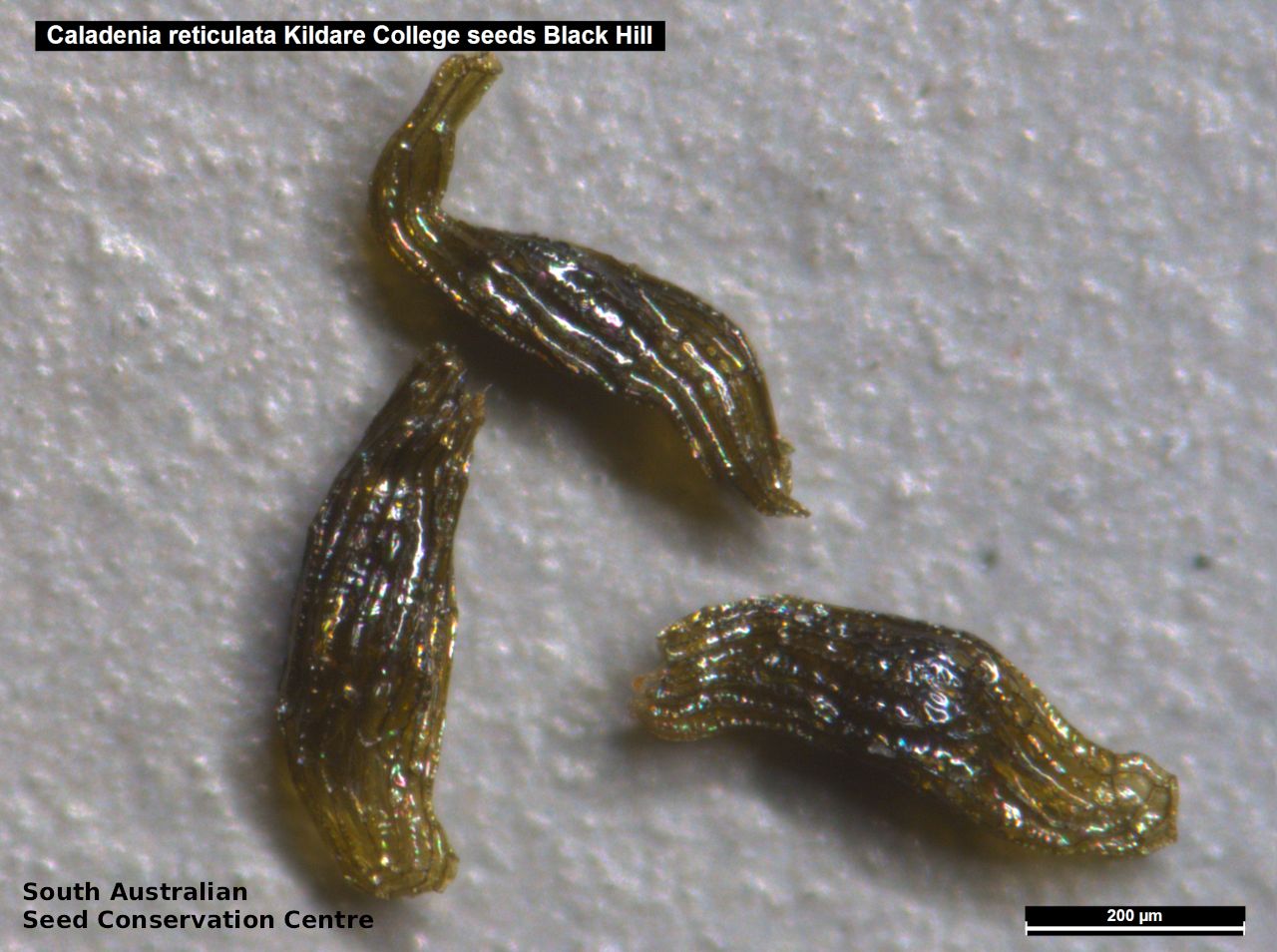

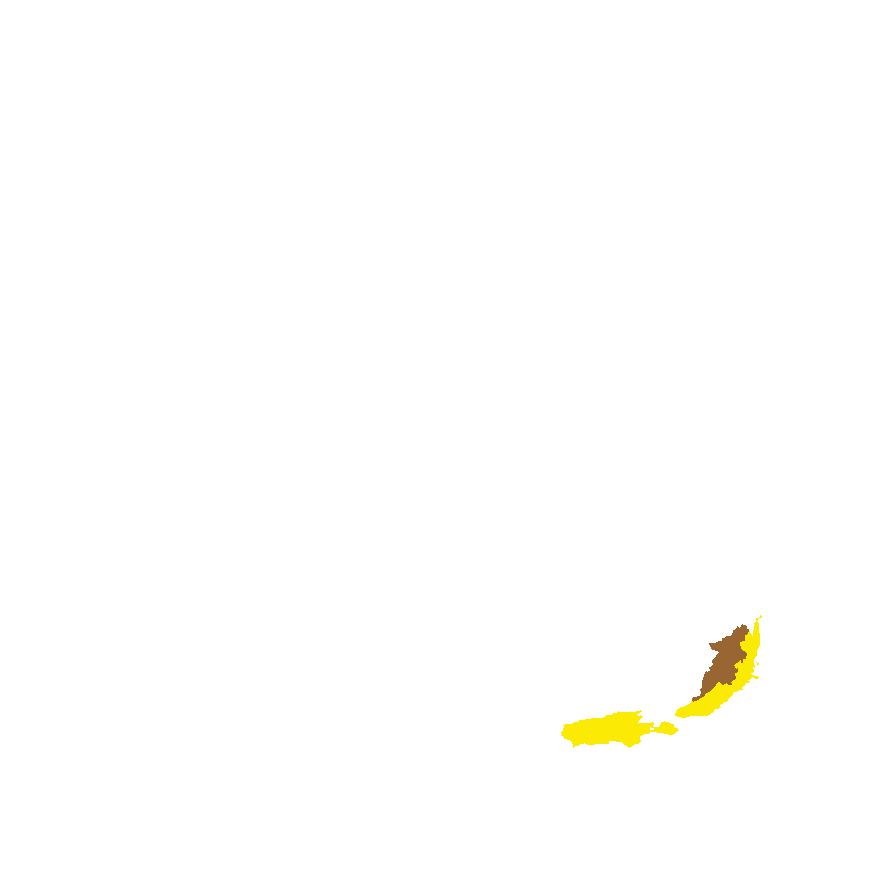
Prior names
Calonemorchis reticulata
Arachnorchis reticulata
Calonema reticulatum
Caladenia huegelii var. reticulata
Common names
Veined Spider-orchid
Veined Caladenia
Etymology
Caladenia from the Greek 'kallos' meaning beauty and 'aden' meaning a gland, referring to the colourful labellum and the glistening glands at the base of the column that are present in many of the species. Reticulata from Latin meaning netted or net-like, referring to the dark red veins on labellum.
Distribution and status
Found in the southern Mount Lofty Ranges and on Kangaroo Island in South Australia, growing on clay or gravelly soils on slopes in open woodland. Also found in Victoria. Native. Rare in South Australia. Rare in Victoria.
Herbarium regions: Southern Lofty, Kangaroo Island, Green Adelaide
NRM regions: Adelaide and Mount Lofty Ranges, Kangaroo Island
AVH map: SA distribution map (external link)
Plant description
Terrestrial orchid with a flowering stem to 30 cm high. Leaves linear or narrow-lanceolate, to 12 cm in length, hairy. Flower single yellowish-green and red to wholly red flower borne on a stalk to 30 cm tall. Sepals dark, narrow, club-like glandular tips to 10 mm long. Dorsal sepal erect at its base but curves forward, to 30 mm long. Lateral sepals to 35 mm long and 5 mm wide and spreading. Petals slightly shorter and narrower than the lateral sepals and taper to narrow, thread-like tips. Labellum red or yellowish-green with red markings, to 11 mm long and 8 mm wide, edge sometimes with teeth and four or six rows of calli near the base of the labellum but decreasing in size towards its tip. Flowering between September and November. Fruits are pale-brown hairy, papery ellipsoid capsule containing numerous tiny seeds.
Seed collection and propagation
Collect seeds between October and December. Collect fat capsules as they start to dry and turn brown. Pods will split and release the seeds quickly and will require monitoring. To increase the chances of collecting mature pods, it is recommended that a small breathable bag (ie. Organza bags) be used to enclose the developing capsules. Place the capsules in a container that will hold fine seeds and leave to dry for a few weeks or until the capsule split. Then carefully hold the capsule and tap it gently to release the seeds. Store the seeds with a desiccant such as dried silica beads or dry rice, in an air tight container in a cool and dry place, refrigerator or in liquid nitrogen.
| Location | No. of seeds (weight grams) | Number of plants | Date collected | Collection number Collection location | Date stored | % Viability | Storage temperature |
|---|---|---|---|---|---|---|---|
| BGA | 22,000 (0.008 g) | 7 | 18-Sep-2015 | KHB872 Southern Lofty | 1-Nov-2017 | N/C | -80°C |
| BGA | 540,700 (0.19 g) | 30-Oct-2018 | Black Hill Southern Lofty | 24-Apr-2019 | N/C | -18°C, -80°C | |
| BGA | 588,000 (0.21 g) | 19 | 26-Oct-2019 | P.Beltrame Southern Lofty | 10-Aug-2022 | N/C | -18°C, -80°C |
Number of plants: This is the number of plants from which the seeds were collected.
Collection location: The Herbarium of South Australia's region name.
% Viability: Percentage of filled healthy seeds determined by a cut test or x-ray.